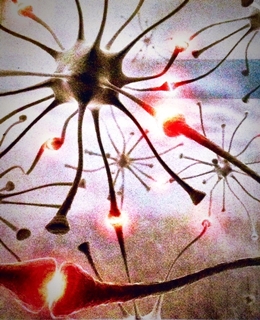Barefoot-like footwear results in proprioceptive gains and marked reductions in lower extremity joint instability during forefoot running.
What Causes Proprioceptive Loss?

Proprioceptive loss occurs with cushioned footwear and results in poor position and movement awareness of the foot, ankle-joint, knee-joint and hip-joint.
It is becoming widely accepted that lower extremity joint injuries have arisen from cushioned running shoes, given that habitual shod runners show clear signs of biomechanical impairments (i.e. heel strike).
- Shoe cushioning impairs mechanics because it alters pressure stimuli which causes mechanoreceptors to relay incorrect information from the plantar surface during running.
Moreover, barefoot runners and many minimalist shod runners maintain good proprioception, suggesting that cushioned footwear is the sole cause of proprioceptive loss.
Unfortunately, when a runner suffers a knee or ankle injury, many practitioners recommend increasingly protective footwear, however runners don’t respond well to such prescriptions because more external protection further dismantles proprioception, allowing more maladaptive landing behaviors to manifest during running.
The key to reducing destructive biomechanics is by enhancement of mechanoreceptor activation. Proprioception-based rehabilitation programs improve functional status in these receptors (Beard et al. 1994; Ihara, 1986). Barefoot or pure minimalist running, for example, comprehensively addresses proprioceptive loss by improving the ability to detect lower leg motions.
Because heightened proprioception is strongly associated with the fine-tuning of afferent-efferent arcs, wearing barefoot-like footwear is critical when it comes to preventing lower extremity joint injury in forefoot running.
Proprioceptive Strengthening Exercises
The best way to improve proprioception is to challenge it. For example, one-legged standing balancing exercises while your eyes are closed challenges postural stability (Laskowski et al. 1997). Progressive balancing exercises on a wobble board while barefoot is also highly effective.
The Take Home Message
Running is a neuromuscular function which relies on feedback from peripheral receptors to solidify learned strategies that enable the body to circumvent pain and injury. In a similar vein, your joints may feel mechanically stable, but if your proprioception is compromised, then so is the stability of your movement trajectory when forefoot running.
More From Run Forefoot:
- Barefoot Running
- Forefoot vs Heel Strike
- Forefoot Running and ITBS
- Why Avoid Heel Strike When Running Barefoot
- Forefoot Running Shoe Reviews
You Might Also Like:
- WristWatch.com
- Up to 50% off Clothing, Gear & Footwear at Moosejaw
- Free Shipping BOTH ways on Shoes at Zappos.com!
- Shop the Sale – Thousands of Brand Name Items on Sale at Paragon Sports!
References:
Beard DJ, Dodd CA, Trundle HR, et al: Proprioception enhancement for anterior cruciate ligament deficiency: a prospective randomised trial of two physiotherapy regimes. J Bone Joint Surg (Br) 1994;76(4):654-659
Ihara H, Nakayama A: Dynamic joint control training for knee ligament injuries. Am J Sports Med 1986;14(4):309-315
Laskowski et al. Refining rehabilitation with proprioception training: expediting return to play. Phys Sports Med, 1997; 25(10).
Schutte MJ, Happel LT: Joint innervation in joint injury. Clin Sports Med 1990;9(2):511-517
Bretta Riches
BSc Neurobiology; MSc Biomechanics candidate, ultra minimalist runner & founder of RunForefoot. I was a heel striker, always injured. I was inspired by the great Tirunesh Dibaba to try forefoot running. Now, I'm injury free. This is why I launched Run Forefoot, to advocate the health & performance benefits of forefoot running and to raise awareness on the dangers of heel striking, because the world needs to know.
Latest posts by Bretta Riches (see all)
- Does Foot Strike Really Matter in Running? YES! - 17/04/2024
- Heel Lifts Increase Injury in Runners - 16/04/2024
- Are Minimalist Shoes Good for Seniors? YES! - 14/04/2024

Leave a Reply